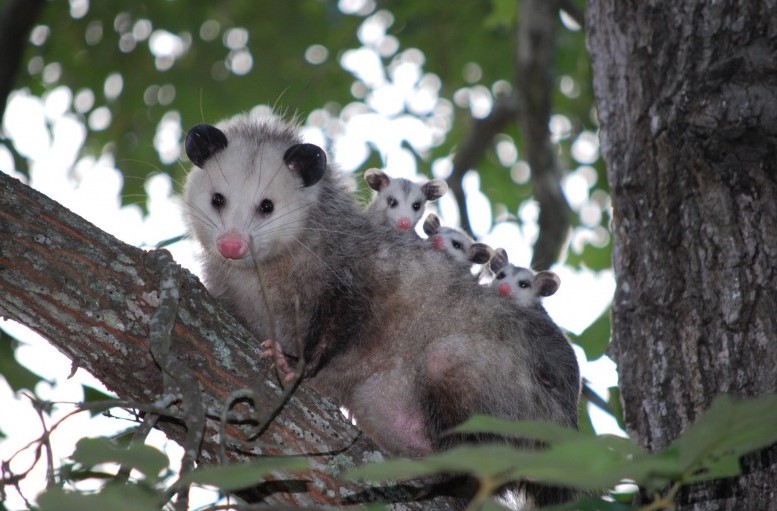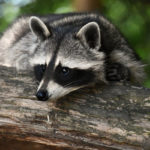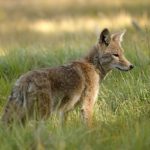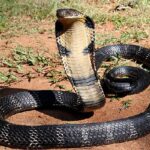
- Brian Moss (President)
- AAAC Wildlife Removal
11/28/2022 Total words : 1679
Kinds of Opossums
The Virginia opossum is the only marsupial found in North America. Marsupials are animals whose young are born undeveloped and finish their development in a pouch on the mother's body. These marsupials are about the size of a house cat, with a pointed snout and a long, prehensile tail. You may only be familiar with Virginia Opossums, the only opossum species in the United States. But did you know that there are different types of opossums? Here's a quick guide to the different opossums you might encounter. Different Kinds of Opossums Over the decades and significant generations, all the species alive today have developed characteristics that make them distinct. They may have evolved due to environmental conditions, geographical isolation, or other creatures with whom they share their habitat. Below, you can find the different species of opossum! Water Opossum One opossum species you might encounter, especially near bodies of water, is the Water Opossums. This species, Chironectes minimus, is known as yapok locally. They are the only existing member of their genus, Chironectes. Water opossums are particularly small opossums. They can grow up to 11 and 13 inches long, which excludes their 14 to 16 inches long tail. These marsupials are patterned with grey and black fur. Their muzzle up to the back of their head is all black, except that they have a thin, white line of fur above their eye. Below their muzzle, down to the mouth and stomach, are all white. These species are more rat-like compared to Virginia opossums. Water opossums are well-known for their aquatic adaptations. Their fur is water repellent, and their webbed hind feet allow them to stroke through the water. These semi-aquatic beings exist throughout Mexico, Argentina, and Central and South America. With their water-loving behavior, they are often found near bodies of water, such as lakes and freshwater streams. Big Lutrine Opossum Scientifically known as Lutreolina crassicaudata, it garners the local name thick-tailed opossum or coligrueso. These species obtain the name "lutrine," which means "otter-like." This is because of their specifically otter-like body. These marsupials are native to South America. Under their genus Lutreolina, another distinct species exist- the Lutreolina massoia. These two are the only living species under their genus. The Big Lutrine Opossum is an exciting species of the family. These species are similar to water opossums, being good swimmers. Most of them have a fur color appearing as yellowish or dense red. They prefer living near bodies of water but not far from grasslands and savannas. Woolly Opossum Called Caluromys philander in scientific language, the woolly opossum is a bare-tailed woolly opossum in its full name. They are first described by the famous Carl Linnaeus, a Swedish zoologist. These species are easily recognizable with their gray head and brown to gray fur. A visibly large, brown eye features this animal. They also have ears that appear to be bigger than other opossums mentioned. Woolly opossums obtained their name because of their partially naked tail. It's only furry at the base. You may also notice the thin lining of black fur between their eyes, extending from their muzzle to the middle of their forehead. Woolly opossums extend from Northern and Southern Brazil to Venezuela. Brown Four-Eyed Opossum While you may think that all opossums have pouches, it's not. All the way from Mexico to Bolivia and Brazil, brown four-eyed opossums, Metachirus nudicaudatus, reside. These species are pouchless opossums. Like Water Opossums, brown four-eyed opossums are the only recognized species in their genus, Metachirus. They have a white spot in each of their eyes, which inspires their name. One thing that marks their identity is their tails which measure longer than their body. Brown four-eyed opossums build their nests in the branches of trees, on rock crevices, and under logs. These nests are made of random forest materials such as leaves and twigs. Bushy Tail Opossum It seems like we have a lot of opossums first described by zoologists! Oldfield Thomas gave the first descriptions for this species, the Glironia venusta. These animals belong to the genus Glironia. The populations exist in the Amazon of South America. Although there is still a lot to learn about these species, one thing for sure is that they love to dwell on canopies. This bushy-tailed opossum is as distinct as the previously discussed species. They are called its name for their specifically bushy tails. Other features that best present these marsupials are dark ears, which appear large and oval. It's important to know that these species are rare. For this reason, only little is known about their behavior. Marmosa Opossum Now, we have here a uniquely exciting species, the Marmosa xerophila. These species exist in the northern side portion of Venezuela and Colombia. This is another opossum that doesn't carry pouches with them! They are notable for their large ears, large eyes, and dark fur that surrounds their eyes- like raccoons! A long, slender body and prehensile tails also manifest this species. If you ever encounter this opossum species, you'll notice a pale yellow or grayish brown dorsal fur and a combination of these colors on their tails. So, if you ever meet one, take the opportunity to identify what species by also considering the descriptions above! Indeed, you'll get to appreciate them. Thylamys As cute as the name sounds, these opossum species are also very small and tiny! And like the Marmosa opossum, this group doesn't have pouches with them too! Adorable, if you like to call it. To specify the species, Thylamys elegans is the elegant fat-tailed mouse opossum. This is first described by a famous naturalist named George Robert Waterhouse. This species mainly got its name for its mouse-like size and appearance. With fur coats that appear gray, white limbs and the black ring of fur surrounding the eyes, these marsupials achieve an adorable look. This species can live in a wide range of habitats. They can even exist 8200 feet above sea level. They can specifically be found in the western areas of the Andes in the country of Chile. Pretty sure these animals withstand freezing temperatures. Gracilinanus agilis The Agile Opossums are arboreal species of the central South American areas. There are numerous reports of sightings in countries like Argentina, Bolivia, Paraguay, and Brazil. You may have thought there are only a few pouchless marsupials, but this species will break it to you again! This is partially why they're referred to or grouped as mouse opossums. These opossums tend to exhibit dusky gray dorsal fur and light gray ventral fur. They also have a thin, dark ring that surrounds their adorable eyes. This is no different feature compared to other mouse opossums. Pygmy Short-Tailed Opossum Last but not least, we have the Pygmy Short-Tailed Opossum (Monodelphis kunsi). These are pouchless marsupials as well. This is another opossum that exists in South America. More popularly referred to as "joeys," these are smaller species within their entire family. But this name is only for males, though! Female opossums in this family are called "Jill." The term "pygmy" signifies their significantly small size. This species was initially categorized as endangered in the year 2001. But after that, they've been classified as the least concern. Out of all the mouse-like opossums out there, these opossums resemble them the best. When you bump into them, you'll surely go into confusion! The fur coat of this species is shorter and is faded brown in color. The Common Virginia Opossum Now that we've looked at the different opossums, it's about time we focus on the most popular one- the Virginia Opossum (Didelphis virginiana). You might have heard of this marsupial before, as it is commonly seen in North America. In fact, it is the only extant species on the entire continent! This common opossum can measure 14 to 37 inches. This excludes the tail length, which is usually 5 to 19 inches. As for their weight, they can go from 1 to 4 kilograms. The males are, of course, bigger than the females. Viriginia Opossums exhibit an omnivorous diet. They are also nocturnal, meaning they're active at night and sleep during the day. The most unique feature of this opossum is its white-faced appearance. And the most fascinating behavior is their defense mechanism for "playing possum." When they are threatened or feel scared, they will fall on their side and remain still for a period of time. Their mouths will also drool and exude a foul odor. This is to make them appear dead and distasteful to predators. Other Opossum Species After discussing several species of opossums above, you know they're indeed exciting and diverse. So, it's no surprise that there are a lot more species that exist in the wild. Here are other species of opossums: Common Opossum - Didelphis marsupialis Heavy-browed mouse opossum - Marmosa andersoni Yellow-sided opossum - Monodelphis dimidiata Red three-striped opossum - Monodelphis umbristriata One-striped opossum - Monodelphis unistriata White-eared opossum - Didelphis albiventris Black-shouldered opossum - Caluromysiops irrupta Ihering's three-striped opossum- Monodelphis iheringi Hooded red-sided opossum - Monodelphis palliolata Gray and black four-eyed opossum - Philander opossum Brown-eared woolly opossum - Caluromys lanatus Need Help With Opossum Infestation On Your Property? Dealing with opossums yourself can have you face risks to your health. But, keeping them can have potential property damage too! If you have an opossum infestation on your property, don't hesitate to call AAAC Wildlife Removal for help. Final Word Animals, through time, have developed characteristics and habits that make them classified into different species. The opossum is no different! There are a lot of them existing in South American countries. This includes Water Opossum, Big Lutrine Opossum, Woolly Opossum, and Brown Four-Eyed Opossum. At the same time, the only North American marsupial is the common Virginia Opossum. There you have it! These are the different kinds of opossums that exist in the world. Now that you know more about them, maybe you'll be able to appreciate them more the next time you see one. To explore more about the various types of opossums and the damage they can cause, click here: opossum types.













